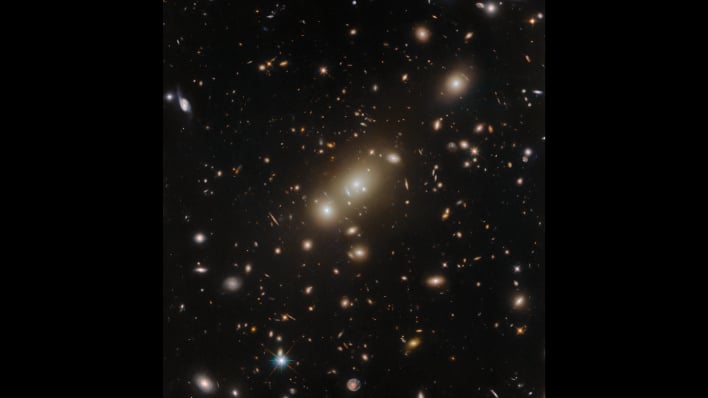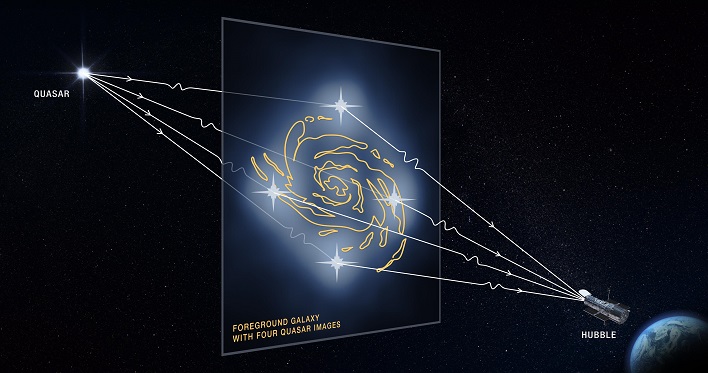Hubble Space Telescope Captures Wild Galaxy Clusters That Are Gravitationally Warped

Hubble continues to hold its own in terms of providing spectacular imagery of deep space. Its ability to grab snapshots of deep space objects via gravitational lensing gives astronomers and scientists the ability to magnify distant objects. This can be seen in the top image, as the telescope sent back a picture of a massive cluster of galaxies, known as Abel 3322.
The cluster's gravity, the bulk of which is believed to come from dark matter, acts as a cosmic magnifying glass that bends and amplifies the light from distant galaxies behind it. This effect, known as gravitational lensing, generates multiple, warped, and greatly magnified images of those galaxies, much like that of a funhouse mirror.
NASA says that observing galaxy clusters such as Abel 3322, located in the constellation Pictor at a distance of approximately 2.6 billion light-years from Earth, it can further the knowledge and understanding of the evolution and interactions of dark and luminous matter in galaxy clusters. It can also shed more light on the powerful gravitational 'telescopes' that are utilized to magnify objects in deep space through gravitational lensing.
One of the instruments that were used onboard Hubble to capture the image was its Wide Field Camera 3. Its key feature is its ability to view the electromagnetic spectrum from the ultraviolet through the visible light. The second instrument that was used was the Advanced Camera for Surveys. It was primarily designed to survey large areas of the sky at various wavelengths with 10 times greater efficiency than its predecessor, the Wide Field Planetary Camera 2.
NASA says that knowing the locations of these gravitational lenses, such as Abel 3322, can help with future observations with both Hubble and the James Webb Space Telescope.


